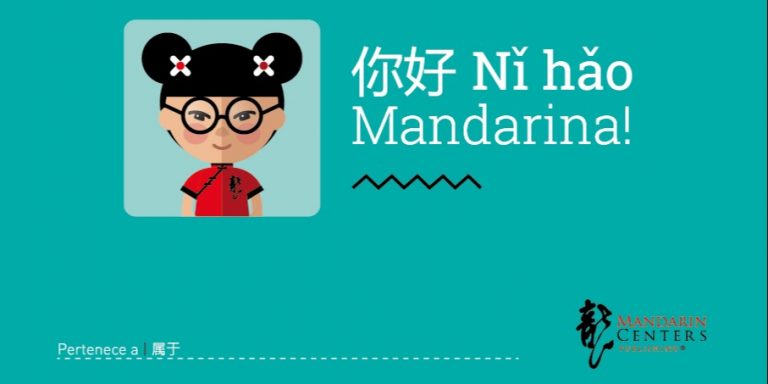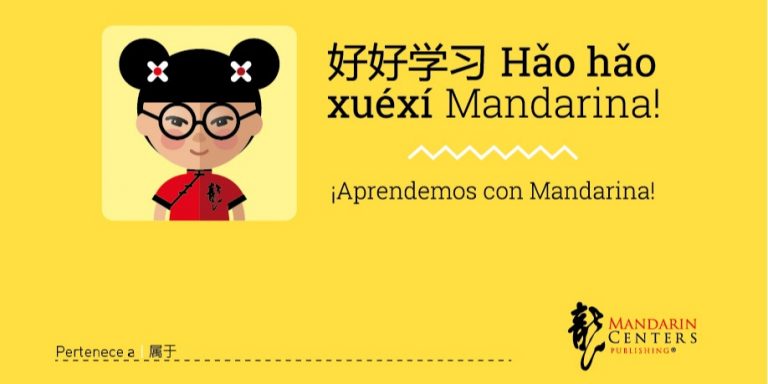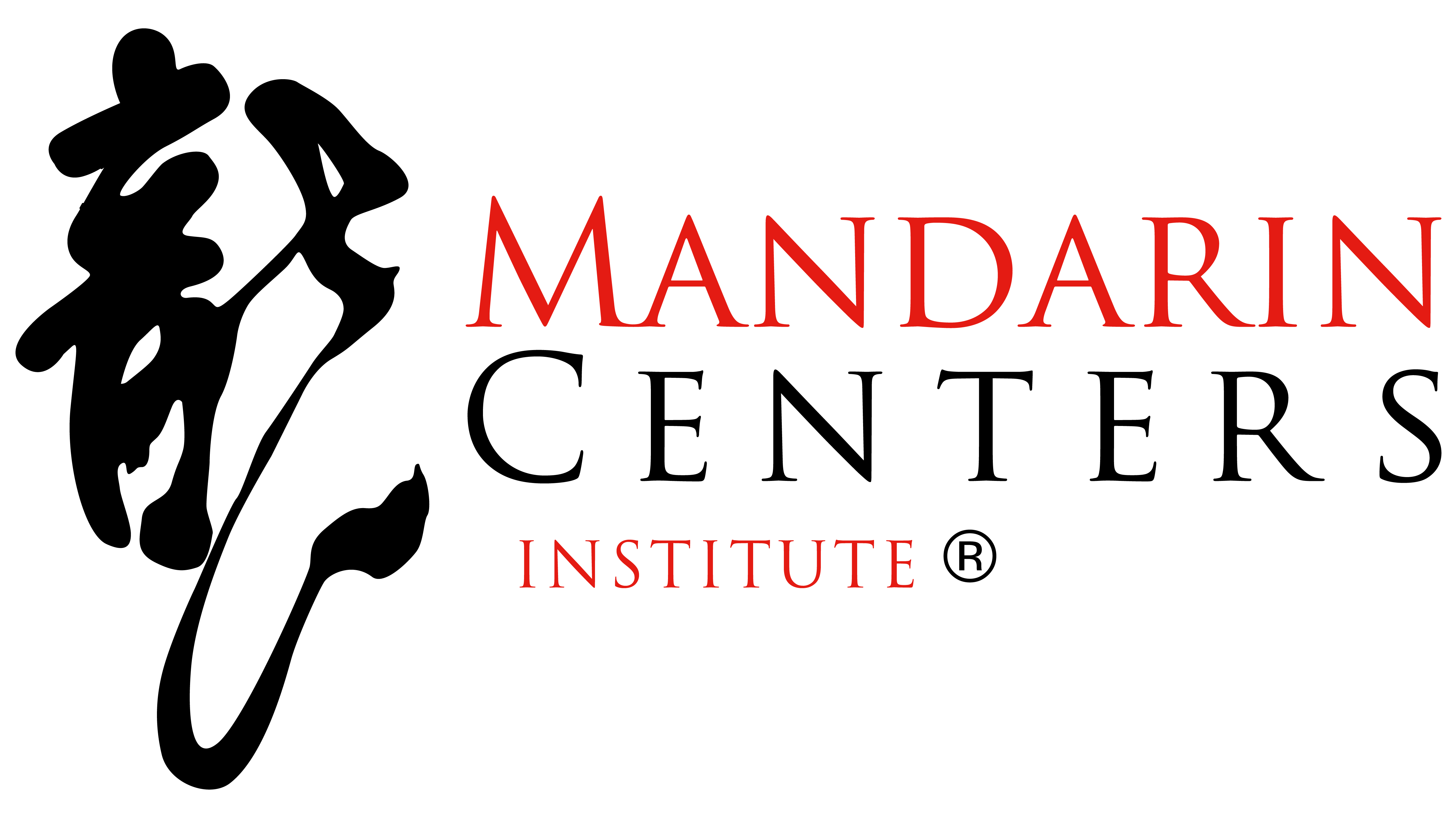Mandarin Chinese language courses for children
We cater children of all ages, organizing them based on school year to ensure homogeneity in in maturity level.
Our method is is tailored to children’s learning styles and interests, allowing them to commence their Mandarin learning journey at various ages. All games and activities align with the curriculum of the four levels designed by the Confucius Institute for children (YCT 1 to 4). Our Mandarin Center Kids
Program is recognized as a benchmark in various educational centers worldwide, emphasizing our specialization in children’s language education.
In the new world order, China is on the brink of consolidating its position as the world’s leading power, functioning not only as the global manufacturing hub but also as a significant buyer. Proficiency in Mandarin Chinese is becoming increasingly essential in establishing effective relations with China.
Why study Mandarin Chinese?
Choosing Mandarin Chinese as a second language does not imply neglecting other languages like English. Mandarin is spoken by over one billion people in Asia and other parts of the world, and the continent’s rapid growth presents significant advantages for the future.
Moreover, the syntactic structure of Mandarin Chinese closely mirrors that of Spanish and lacks grammatical gender or declensions, akin to Latin. This characteristic makes it readily accessible and easily embraced by the student.

Advantages of learning Mandarin Chinese
Learning another language during childhood offers numerous advantages, leveraging the natural language acquisition process. From infancy until around the age of 12, the brain is exceptionally receptive to learning additional languages. Introducing a new language at an early age provides substantial benefits to children:
Enhanced Communication Skills:
Exposing a child to a foreign language early on contributes to increased fluency in communication.
Enhanced Cognitive Flexibility and Creativity
Research indicates that language learning is primarily a cognitive process, influencing not just linguistic but also creative aspects of the mind.
Improved Problem-Solving Abilities
Bilingual children often exhibit superior problem-solving skills, enhanced critical thinking, and greater mental flexibility.
Cultural Enrichment
Providing children with a second language fosters a higher cultural understanding, enhancing their tolerance for the diverse world they inhabit.
Enhanced Cognitive Skills
Learning a second language can reshape the functioning of the brain, leading to improved concentration and selective attention skills.
Increased future opportunities
Bilingualism not only opens doors professionally but also personally. In the contemporary job landscape, proficiency in multiple languages is a prerequisite for numerous positions.
Programs for children
At Mandarin Centers, we prioritize children’s language development. Hence, we have curated a dedicated Chinese program for children—Mandarin Centers Kids. This program is designed to facilitate natural, interactive and enjoyable language learning experiences for children.
- Children from 1 to 3 years old
- Children from 3 years to 5 years
- Children from 5 to 8 years old
- Children from 9 to 12 years old
At the Chinese center, Mandarin centers, we recognize the significance of early language acquisition, leveraging the innate ability of children to absorb new knowledge effortlessly. Our programs are meticulously crafted to facilitate optimal learning experiences for each age group.
Numerous professionals concur that the first three years of life present a period of unparalleled brain growth, making it an optimal time to introduce linguistic stimuli. This perspective is endorsed pedagogues and language experts, who observe the remarkable receptivity of children in early education to embrace additional languages.
Therefore, the introduction of a foreign language should focus on reinforcing everyday conversational situations (greetings, farewells, courtesy formulas, etc.), supported by visual and auditory methodologies. To align with this principle, we’ve designed a specialized Chinese program for children called “Mandarin Centers Kids”. This program employs interactive classes, games, movie watching, and song listening to foster creativity and facilitate the acquisition of a new language.
Engaging in play is a tremendous opportunity opportunity for children as it allows them to incorporate their first words into their vocabulary through various leisure activities.
Thus, our teaching team consists of 100% native teachers with a specific degree, such as a Bachelor of Arts or Hispanic philology, to teach the Chinese language. They possess comprehensive knowledge of our academy’s curriculum.
Additionally, they bring experience in early childhood education, ensuring they are well-equipped to teach the youngest children effectively. With the support of our teachers, students acquire essential skills to navigate Mandarin language.
Our Chinese course designed for children from 1 to 3 years old has gained recognition as a benchmark in Chinese language education within various schools and colleges globally.
The language center extends beyond its role as a place for acquiring language skills; it serves as a space for children to socialize and connect. Here, they develop openness to new challengesfostering independence and a positive self-image. The advantages of multilingualism contribute to cultivating personal self-esteem.
Language content
- Greetings and farewells
- Use of the verbs in introductory formulas
- Identifying individuals in various contexts (school, family)
- Functional commands for children: sit down, stand up, share with peers.
- Understanding states of mind
- Knowledge of animals, food, clothing, colors, furniture, warning signs, body parts, sizes and shapes.
The advantages of beginning to acquire a new language have different qualities when compared to an earlier age period, although they are no less effective. In this sense, there are a series of characteristics that develop at this stage that should be taken advantage of.
• Increased fine motor skills: better use of tools such as scissors and paper.
• The level of personal autonomy increases.
• Ability to articulate longer and more complex sentences (subordinate clauses, etc.).
• They begin to perceive third parties’ states of mind.
• They begin to acquire temporal concepts.
• Consecución con éxito de pequeñas funciones.
The knowledge of a second language amplifies the skills of memory, expression and the ability to create, as well as the rapid incorporation of more languages. In this sense, ethical values and tolerance towards other cultures are promoted by learning to understand other realities of their environment.
For this reason, at Mandarin Centers we have created a Chinese course for children between 3 and 5 years old in which they develop through classes dedicated to interaction and which are carried out by watching movies, listening to songs in that language or through pastimes that promote learning combined with fun.
Play is an essential tool in the educational process as it implies a fun situation for the child, freedom and characterized by discovery and fantasy. This affects the affective, psychomotor, cognitive, social and linguistic development of the children, getting to know what surrounds them and encouraging thinking and emotions.
Language content
- Use of stories with good illustrations.
- Use of appropriate songs to assume the objects covered in class.
- Use of sounds and spellings.
- Books with four or five words per page and colorful.
- Use of flash cards to acquire content from everyday reality.
Faculty
The added value that Mandarin Centers offers, in addition to a proven training project, is a professional group of native teachers with training in education for children and with an exhaustive knowledge of the program that we carry out in our academy.
Classrooms
The classrooms are made up of minimum groups of four students and the training will last for one school year. Thus, the study time will be one and a half hours a week, which means six hours a month in total so that children can combine learning with other daily life activities.
According to the regulatory precepts, early childhood education is a stage of education in which diversity should be encouraged so that children can develop their abilities to the maximum. In our educational center we want to be not only a language school, but also a point of reference in learning, interaction and socialization between boys and girls.
Didactic material
The teaching material used in our Chinese course for children aged 3 to 5 is called ‘你好! Nǐ hǎo! Mandarin.”
At Mandarin Centers we have been able to appreciate how formal education has evolved in recent years in favor of language teaching from the earliest years of life. In order to adapt to the new curricular requirements, we have developed a new material with which Mandarin Centers Publishing intends to collect the most significant aspects of education today. Everyday actions, the objects that surround us and, why not, fun, are elements that have been taken into account in the pedagogical design of this book. The aim is to provide meaningful learning, in which students feel integrated in a pleasant and cooperative environment.

The early learning of a language becomes an advantage for students in the future because we live in a world that highly values the knowledge of other languages. Therefore, the possibilities multiply when acquiring language skills that allow greater independence when traveling, getting information or finding a job.
In addition, Mandarin Chinese is the most widely spoken language in the world and is in growing expansion. The alternatives of the Asian continent are increasing and certain countries that are experiencing an important economic development are located in this continent.
Moreover, incorporating this language as a second language does not imply that the learning of other languages such as English, German or French is neglected. On the contrary, since the mind becomes more flexible, allowing the assimilation of new languages much more easily.
Mandarin Chinese is becoming one of the most important languages. In fact, thanks to the growth that China is experiencing in recent years, Mandarin is expected to be one of the most demanded languages in the near future. Therefore, an early teaching of Mandarin Chinese can become an advantage for your children and will open a wide range of possibilities for their future career.
For all these reasons in Mandarin Centers we have developed a special Chinese teaching program for children between 5 and 8 years old to acquire basic skills in this language and we have called ‘kids’. Thus, this is the time when the student is getting older so, although the game is still the main form of interrelation with others, is now able to cope with situations with more complex rules.
Language content
- Visual work, with quality images.
- The flash card method for them to associate concepts of their reality.
- Promotion of songs that are neither too fast nor too slow.
- Official supporting workbooks.
Faculty
In our Mandarin academy we have a group of teachers who have great experience in the field of teaching Chinese to children between 5 and 8 years old, and who know perfectly the program and the methodology to be applied in the courses for children.
Classrooms
The methodology uses student interaction to promote learning among them, which, at this age, they acquire almost effortlessly. To this end, the classrooms are equipped with Apple TV to encourage games, videos and music in this language.
Didactic material
The didactic material used in our Chinese course for children between 5 and 8 years old is called ‘Hǎo Hǎo Xuéxí Mandarina”.
Everyday actions, objects that surround us and, why not, fun, are elements that have been taken very much into account for the pedagogical design of this book. The activities are designed according to the theory of multiple intelligences of learning, with the aim of developing knowledge that adapts to each of the different ways of acquiring concepts that children have.
A learning routine is created based on a highly planned pattern that, in turn, incorporates different dynamics adapted to the age cycle to which it is addressed. The general contents are structured by themes and are designed to be adapted to the duration of a complete school year.

In the new world order, China will soon consolidate its position as the world’s leading power, not only as the world’s factory but also as the world’s buyer, so mastering the Mandarin Chinese language will be essential in relations with China.
Las ventajas del aprendizaje de un idioma pueden ser diversas como diferenciarse cultural y laboralmente. Así, algunas de las ventajas de aprender chino mandarín son:
• It is the most widely spoken language in the world.
•Mastering the Chinese language will provide a differential value to the child for his or her future.
• Children learn the language virtually effortlessly through early stimulation.
•Learning other languages improves and develops your mental capacity.
Why study Mandarin Chinese?
Learning a second language is a fundamental aspect in the context of the current world in which we live. This circumstance, which is well known by society, has generated the proliferation of the activity of academies so that the vast majority of citizens already know an additional language. Therefore, the quality by which a student can be distinguished is no longer by knowing how to use a language but by which one he/she knows.
Thus, the Chinese course for children between 9 and 12 years of age can be an advantage because it is the most widely spoken language in the world (more than one million people) but most of those who know it belong to the country of origin.
In this sense, within the new socioeconomic framework, China is consolidating its position as one of the world’s leading powers. As the country with the largest foreign exchange reserves on the planet, its internal and external growth is booming, which translates into great job opportunities in the near future. Its expansion means that Mandarin speakers are required in other parts of the world, which implies a point in favor of those who know the language.
Faculty
Faculty
Classrooms
All of our classrooms are equipped with Apple TV so that students can use our game development program and iPad applications that complement our classes.
Didactic material
At this age, there are two levels for learning Mandarin Chinese: beginner and intermediate. Therefore, there is a first and second volume which is intended for the basic course and with which the following skills will be acquired:
The first and second volumes form the basic course and teach:
• Pinyin
• Listening comprehension.
• Reading comprehension.
• Presentation of the strokes and their order of writing.
• The structures of Chinese characters.
• Radicals and simple characters.
• How to look up characters in the dictionary.
• How to type the characters.
• Guided writing of approximately 100 characters.
What makes this textbook different?
It is very complete, covering all areas of the language. Its design is very modern and attractive. The books have a very attractive structure and use a gradual learning system, starting with the simplest characters and progressively increasing in complexity.
This style of books, which have been created by the Beijing publishing house BLCUP, one of the most prestigious in this type of editions, is specially created for the teaching of Western students. In addition, they have the prestige of two institutions dedicated to the expansion of the Mandarin language around the world, the Beijing Culture University and the Hanban, and follow the criteria of the official YCT (Young Chinese Learners Test) of the Confucius Institute.
One of the authors, Yamin Ma, is a prestigious author who has published other titles aimed at children and has studied in Canada. Co-author Xingying Li studied linguistics in Beijing. Both are currently teaching at an international school in Hong Kong.


